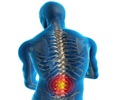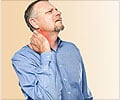How can we Diagnose Torticollis?
Physical Examination
A physical examination of the neck helps the doctor to confirm the deformity.
The doctor looks for the position of head and neck of the patient.
When the doctor touches the affected area of the neck, the muscles will taut and the touch elicits pain.
The movement of the neck is limited and painful.
Diagnostic tests
Electromyogram (EMG) can be used to detect overactive muscles.
X-rays help rule out the causes of abnormal posture and detect the abnormalities of bones related to torticollis like -
- Partial fusion of bones of the neck.
- Absence of neck bones.
- Fractures of neck bones.
CT scan of neck and MRI of brain
These scans help detect neurological problems like nerve compression and disc prolapse.








